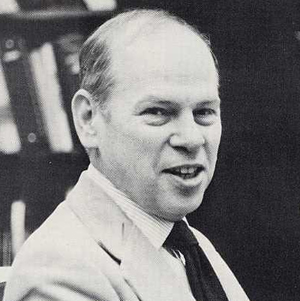Lidofsky: 2 Professors Study Uses of Live TV
 2 Professors Study Uses of Live TV
2 Professors Study Uses of Live TV
By MARC LIPSCHER
Columbia Daily Spectator, Volume XCVIII, Number 5, 12 September 1973
A preliminary study of the educational uses of live television, which could lead to the construction of a million dollar classroom television system at Columbia, is currently being conducted by two members of the faculty of the School of Engineering and Applied Sciences, one of the two revealed yesterday.
The study is being done by Professor of Nuclear Science, Leon J. Lidofsky, and Associate Dean for Academic Affairs, Ralph J. Schwarz, and, according to Professor Lidofsky, will probably result in the two being granted a $20,000 research project this winter.
The professor asserted, "If we had the results of the (research project) report now, and the results were favorable, I'd guess the (million dollar) program could go into effect no earlier than one year but no later than two years from now."
"The cost of a television system would probably be paid by off-site people, such as local industry, rather than by the university itself," Dr. Lidofsky stated.
"At the moment, nothing that we are doing involves any large sums of money," he noted.
Professor Lidofsky said "$20,000 will be needed for research on the planning of the system. Obtaining the funds will be a problem, but I do not think that it is insurmountable for the funds could be sought from foundations," he explained.
"When the preliminary study is completed sometime during the winter, its findings will be turned over to Engineering Dean Wesley Hennessy and Executive Vice President for Academic Affairs Wm. Theodore de Bary," he added.
He noted that during off hours the (television) system might be used by the public for training teachers and firemen, and for speedwriting and stenography courses.
The possibility of the engineering school using educational television was discussed in a report last year by an engineering faculty on future aims and goals of the school.
Dr. Lidofsky noted, however, that an earlier source of the idea was a trip he and Dean Schwartz made to Stanford and Southern Methodist Universities.
"At those universities," the professor said, "a number of courses are presented on live television."
"Students in such courses opt either to sit in class and participate in person, or watch and listen to a television monitor and participate via microphones or telephones. At SMU, the system is available in every graduate course at the school of engineering," Dr. Lidofsky explained.
"We spoke to random students at SMU, and Stanford, and almost every student we spoke to responded favorably. In fact, some students of large lecture classes reported that they saw their professor more often than they normally would have," he stated. Such additional contact was made possible by mandatory student-instructor conferences, the professor noted.
